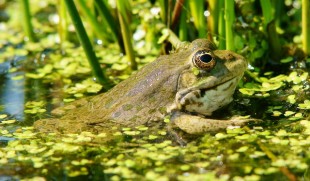If you are embarking on the exciting and rather terrifying process of applying for a grant from the National Lottery Heritage Fund (NLHF), we have good news for you. The path to your goal is well-trodden, and the people that have been there before you haven’t just left clues. They have been awesome enough to give you their words of advice, based on their own first-hand experiences of what you are about to go through.
Here at Heritage Insider, we have worked with over 30 organisations to raise more than £36m in National Lottery Heritage Fund grants since 2014.
Below, you’ll find plenty of helpful advice from your heritage industry peers. First though, let’s start with a bit of background about where the funding money comes from.
Jump to:
- About the National Lottery Heritage Fund
- Applying for NLHF funding
- Advice from successful NLHF applicants:
- How we can help
About the National Lottery Heritage Fund
The National Lottery was established in 1994 and along with it came the opportunity for good causes within the arts, charity, sports and heritage sector to apply for lottery funding to support their various projects. The National Heritage Memorial Fund (NHMF) was given the responsibility for the distribution of the heritage share of the lottery funds in the UK and the lottery fund distribution arm of the NHMF subsequently became the Heritage Lottery Fund (HLF), and more recently the National Lottery Heritage Fund (NLHF).
The heritage sector was allocated 20% of total funds raised from the sale of Lottery tickets and the then HLF expected to award around £430 million to new projects nationwide. Since its establishment in 1994, the National Lottery players have raised £34 billion which has helped support 450,000 projects across the UK!

The National Lottery Heritage Fund offers a range of different grant programmes – from £3,000 to upwards of £5 million – and when allocating funding they take into consideration the size of the project, the outcomes for heritage and who it will benefit.
A big part of acquiring funding is to have a clear activity plan showing exactly how your project is going to benefit people, your community, your organisation and the heritage sector as a whole.
As part of our lottery bid mentoring service we can help you to develop a compelling activity plan, which will showcase the best of your project idea.
We also offer a project document review service. If you are writing your own application, we can support you by giving it a ‘health check’ for applications of any size.
So, what advice would successful NLHF applicants give?

Penny Williams is the Technical Director of the Freshwater Habitats Trust and a client who we worked with to mentor through the activity planning process.
Penny’s main advice is that your activity plan needs to tell a good story. “The main thing is to tell a good story – you don’t need to stick to the exact order, headings and content of the NLHF guidance docs. The main thing is that your proposal flows well, is really easy to read, and your key points are in there.”
The National Lottery Heritage Fund provides a number of guidance documents explaining exactly what they want to see, to enable you to tailor your application and activity plan to their standards, thus giving you a fighting chance at winning funding.
Penny adds that being certain about project outcomes is important and doing small pilot trials before submitting your application can be a good idea. “If you’re unsure about whether something in your project will work – do small trials (with a class/teachers in three contrasting schools for example) and add the results as an appendix”.
Another tip Penny would give to prospective grantees is regarding the formatting and details of the plan. “Keep the text really short and inspirational. Put all detail in tables and if necessary put extra info in the appendices/appendix tables.” Keeping text short and to the point will show that you know your project inside out and that you know exactly what you need to say.
Trudie Cole is Head of Access and Participation at the National Museum of the Royal Navy and we have worked with her on a number of projects. She adds to Penny’s advice; “Try to distill your plans into three really clear aims for your project from the start. Setting these aims will make the rest of the process much easier. You can map your activity plan to those three aims, and they will act as a guide for reporting and telling the story of your project.”

Evaluation, and re-evaluation, are important steps in every project. You need to ensure that the project is kept on track and that everything which needs to be considered is being considered. It can’t be an afterthought; in fact, it requires careful forethought.
“Build reflection into the project as soon as you begin to design it”, says Trudie Cole. “Reflection and evaluation need to be formative and not just summative”.
The evaluation and consultation process of the project helps you to produce the best possible funding bid. We at Heritage Insider can help you to see things from a different angle and make your bid the best it can be.
3. Don’t forget the importance of engagement

As Penny Williams puts it: “It’s all about people, people, people, people!”
Marie Millward, Project Manager at Ignite Yorkshire, agrees.
“Do not lose sight of the outcomes your project will bring for people”, says Marie. “The best way to keep this central to your activity is to work your project from ‘people’ outwards. No matter what your type of heritage project, you need to ask ‘why are we doing this? Who is it for?’ If your project involves a structural build, it can be all too easy to get lost in that detail and I have seen this before. The human relationships to the project must be reflected in the project team and in the process from the beginning.”
It’s important that your project supports and involves people with sincerity, Marie advises:
“You need to have thought through, in a genuine way, how you are going to tailor your project to support underrepresented groups. Think ahead what the audience role in the process will be, for instance will it be a collaborative relationship? Make sure all project partners are on the same page about this too”.
Trudie Cole adds: “Think beyond the life span of your project, beyond the project legacy and consider how the project supports the bigger picture of your organisation in the very long term. Don’t just think of this process as chasing funding but use this opportunity to support strategic change in your organisation”.

Sorry to break this to you, but you are human. Even you heritage industry superheroes have limits to your time and resource. Striking the right balance between your ambitions and the available resources will help to ensure you do not overpromise and underdeliver.
“Be strategic in relation to what you can offer for the money you are asking for”, advises Susan Palmer, Community Ranger at Sydney Gardens. “Make sure you are not overambitious in your plan. National Lottery Heritage Fund want to see as much value as possible for their money and they encourage applicants to be ambitious, but you need to be realistic about your time and make sure your activity plan is achievable. Once you start your project it will attract attention and energy, so build in capacity to expand and deliver on your proposed activity”.
“Don’t think that you must rigidly execute your activity plan ‘come what may’”, advises Trudie Cole. “It should be a working document that you revisit throughout the life of the project. If things in the wider context change, you may need to make revisions to your activity plan. So long as you have strong and focused outcomes, and you make sure you get those right, it doesn’t matter if you need to adapt the outputs or activities. Knowing the difference between what is aspirational and what is essential will help here. If you do need to make adaptations, be sure to keep National Lottery Heritage Fund informed”.
One of the keys to staying flexible in your delivery is in knowing where to be specific with detail in your activity plan. Marie Millward suggests:
“Don’t pin down the ‘how’ in too much detail at the start. The part of the project that requires detail is the process, not every step of the activity. Falling into this trap would mean that you are not able to be responsive, learn from the project and change things as you go along. In our four-year project, we outlined the process in detail from the start, but we plan the activity yearly. This gives us the flexibility to make change genuinely happen. There is an alchemy in having a clear understanding of what to do but being flexible on the details of how to do it. The skills of an experienced Project Manager are required for walking that tightrope.”
Geoff Roberts, Chairman of Aire Rivers Trust who we recently worked with to write the activity plan for their DNAire project, adds “don’t underestimate the amount of work involved”.

There are several points covered here which are extremely important to consider in the application for funding.
Number one, you absolutely need to know your project inside and out. Know what it will involve, how you will implement it, and which programme you plan on applying to with the National Lottery Heritage Fund.
Secondly, your project will need to benefit a community, or a group of people, and you need to know how it will contribute to the heritage sector as a whole.
The third thing to keep in mind is that you should begin the evaluation process from the very start of the project.
Lastly, strike the right balance between being ambitious and realistic. We all want to change the world, but you will need to consider the limits to time and resource. Be strategic about working within those limits so that you don’t bite off more than you can chew.
Our team at Heritage Insider has provided project planning and mentoring services to over 30 organisations, helping them to acquire over £36m in funding to make their projects come alive. You know the potential your project has, and we can help you show that potential to the National Lottery Heritage Fund.
As client Trudie Cole put it “Heritage Insider are able to take woolly ideas, get to the nub of how to articulate them clearly and pull that thread through the entire process”.
We are proud to have a 98% success rate for funding applications we assist with. We’re passionate about people and improving the heritage sector, so you can rest assured that your project will be in the best hands.

As specialists in the National Lottery Heritage Fund application process, we can work with you to create an activity plan that follows best practice. One example of an activity plan we worked on which NLHF loved was for an application made by the Royal Horticultural Society for their Strategic Investment Programme. Andrew Jasper, Programme Director at the RHS had this to say:
“…my heartfelt thanks for your Herculean effort, great leadership and for helping to keep us all sane in the process. It’s been just so amazing to see how we have all grown during the project and I am so grateful for what you’ve done to keep things going in such an organised and professional way”.
Supporting people to grow is an integral part of what we do. We work in partnership with you to build upon the skills you have in-house, offering support in the areas you need it most. We then help you to bring together everybody’s skills in the most impactful way. Katherine Boler, Fundraising Development Manager at the Hampshire and Isle of Wight Wildlife Trust shares her experience of working with us:
“We are so glad we employed Heritage Insider to help us with our engagement and activity planning. Heritage Insider guided us through the whole process with endless enthusiasm and skill, bringing together all of the different strands that the in-house team and other consultants were delivering for a complex project. The whole Heritage Insider team are lovely to work with and we are hoping to work with them again for the evaluation of the main project.”
Praise indeed from our happy clients, but really, the pleasure is all ours. We love working with people who are going through or planning to embark upon the process of applying for NLHF funding. That’s why we offer a range of support options to help you, no matter what size your project is or which stage you are at. You can browse through our support options here.
You’ll find plenty of further information about the project planning service, which focuses on the grant bid as a whole, including the activity plan, on our website.
Our support is just one conversation away, so please contact us for a chat if you would like to learn more about how we can help you.
If you’re not ready to talk, but want to be the first to hear about workshops, opportunities and handy resources, sign up to INSPIRE, our free network of over 1,000 heritage professionals just like you.

